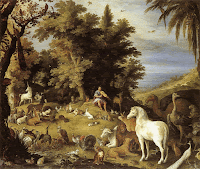 It's so easy to do now -- to take a photograph. Just pull out the cellphone, aim, and press a button. What you saw is instantly preserved.
It's so easy to do now -- to take a photograph. Just pull out the cellphone, aim, and press a button. What you saw is instantly preserved.I am old enough to remember when Polaroid demonstrated on live TV the then remarkable accomplishment of having its new camera eject a printed picture in only 60 seconds. No more waiting until the 24 or 46 exposures were finished, taking the exposed roll of film to a store, and returning some days later after professionals had turned it into prints or slides. Polaroid's 60-second do-it-yourself camera was so remarkable that they had to have hosts of TV shows with live audiences demonstrate the camera so viewers at home would know there was no editing or other TV trickery.
Traveling back further in the history of cameras, we would find further evidence of how comparatively easy photography can be today. Such as the chemically treated glass plates and bottles of caustic chemicals that were once required.
 Behind all these efforts, however, lies the same desire: to preserve something one has seen. To capture it so that one might see it again. We even once referred to "snapshots," to "shooting" a roll of film, and to "photoshoots," unconsciously preserving in our language the similarity between capturing an image and capturing a wild animal to preserve it or even try to possess it.
Behind all these efforts, however, lies the same desire: to preserve something one has seen. To capture it so that one might see it again. We even once referred to "snapshots," to "shooting" a roll of film, and to "photoshoots," unconsciously preserving in our language the similarity between capturing an image and capturing a wild animal to preserve it or even try to possess it.Most photos in the world (I think I can safely guess) are of family or friends. Such photos help us preserve our memories. They allow us to see (and with prints, touch) even when the faces thus preserved are far way or no longer alive.
 |
| "Orpheus and the Beasts" by Sebastiaan Brancx |
"[Beauty] seems to incite, even to require, the act of replication.... Beauty brings copies of itself into being.
It makes us draw it, take photographs of it, or describe it to other people. Sometimes it gives rise to exact replication and other times to resemblances....
Beauty prompts a copy of itself."
What struck me about Scarry's statement is that she did not use that word "capture" that has been so much a part of the lexicon of photography. Instead, she employed words that suggest that beauty can inspire us to become creative ourselves.It makes us draw it, take photographs of it, or describe it to other people. Sometimes it gives rise to exact replication and other times to resemblances....
Beauty prompts a copy of itself."
A photograph is, in a way, an imitation of part of what was before our eye when we clicked the camera's shutter -- but often only a pale imitation of the real thing. A photograph of a mountain is hardly the mountain itself. Scarry's statement suggests something more. It suggests the desire not to capture just an image, nor to capture the thing itself, but the desire to create in our own life something that bears some of the same good qualities of what we have perceived as being beautiful.
Moreover, some of the qualities we can perceive as being beautiful are known not by the eye but by the heart. The grateful heart.
It's amazingly easy to pull out the cellphone and push a button. It's much harder to creatively imitate the caring and helpfulness and kindness we have received from other people. But that we can sometimes do so is also a remarkable thing.
~ ~
(The quotation is from On Beauty and Being Just by Elaine Scarry, © 2011, p. 3.)
1 comment:
Even though my closest friends have changed over the years, each of them has been like a stepping-stone that has helped me along life's path.
Post a Comment